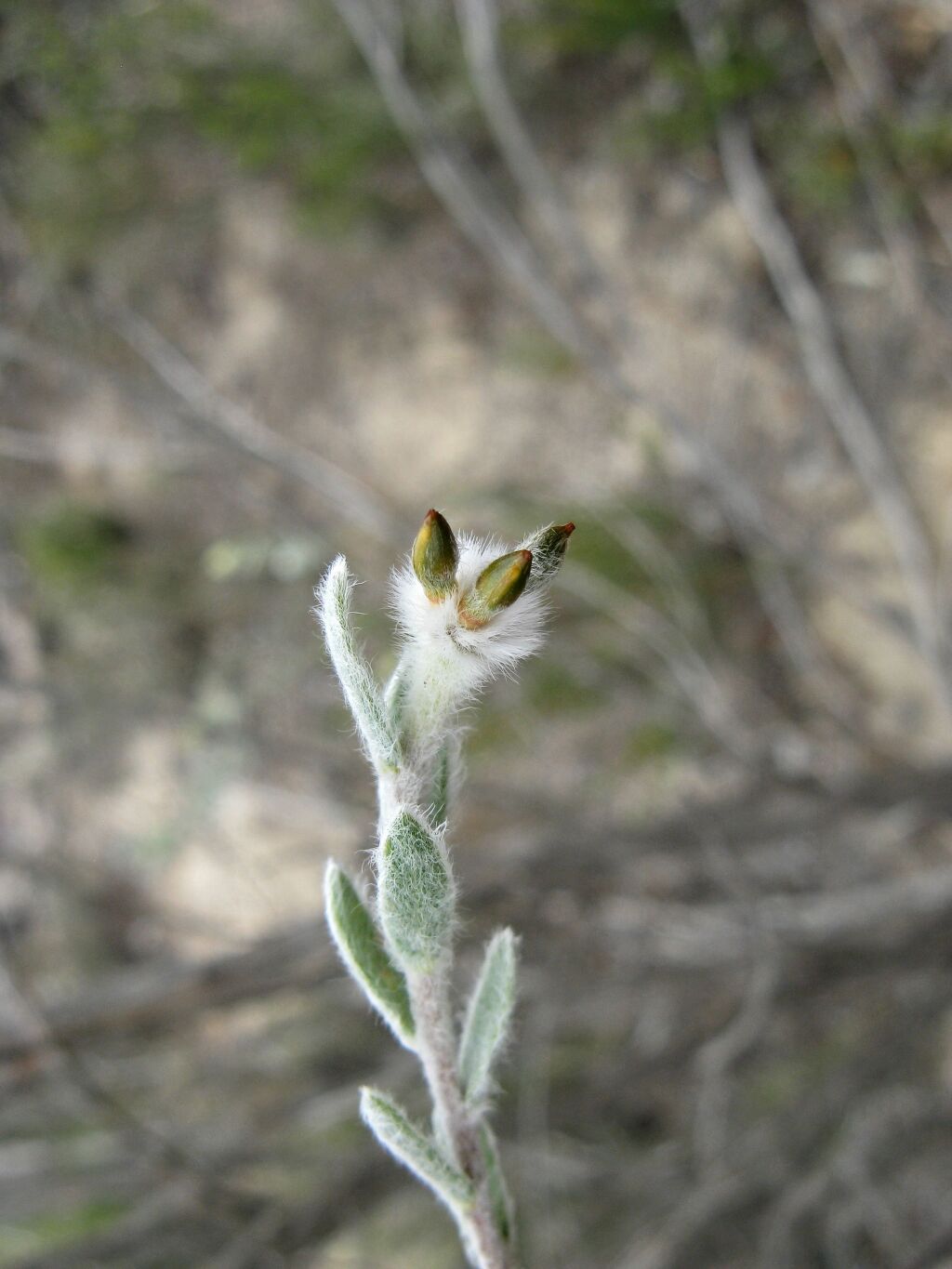Pimelea octophylla
R.Br. Woolly Rice-flowerShrub 0.4–1 m high; young stems densely hairy; nodes prominent. Leaves alternate or sometimes almost opposite, shortly petiolate, more or less narrowly elliptic, 3–18 mm long, 1–6 mm wide, concolorous, silvery or mid green to dark bluish-green, with long white hairs on both surfaces when young. Inflorescence terminal, usually pendulous, a 25–45-flowered head; receptacle well developed; involucral bracts 6–12, sessile, leaf-like, 8–12 mm long, 2–4 mm wide, persistent. Flowers bisexual or female, glabrous at extreme base outside, densely hairy above, cream to pale yellow, scented; floral tube 11–14 mm long, ovary-portion with antrorse hairs, style-portion longer than ovary-portion, with long and short spreading hairs outside, hairy inside, circumscissile above ovary; sepals spreading, 2–5 mm long, hairy inside; pedicel hairy; stamens shorter than sepals; anthers opening towards centre of flower; style exserted. Fruit dry, enclosed. Flowers mainly spring.
LoM, MuM, Wim, GleP, VVP, GipP, OtP, WaP, Gold, CVU, GGr, DunT, HSF, HNF, OtR, VAlp. Also SA. Scattered, but locally common from western Victoria through to the Yarra Glen region, Emerald, Beaconsfield and Mornington Peninsula. Usually growing on sandy soil or shallow soil overlying rock. Threlfall (1983) reports an outlying population in the north-east of Victoria.
The woolliness of leaves is quite variable, but the hairs are always long and wispy.
Entwisle, T.J. (1996). Thymelaeaceae. In: Walsh, N.G.; Entwisle, T.J., Flora of Victoria Vol. 3, Dicotyledons Winteraceae to Myrtaceae, pp. 912–930. Inkata Press, Melbourne.
 Spinning
Spinning


